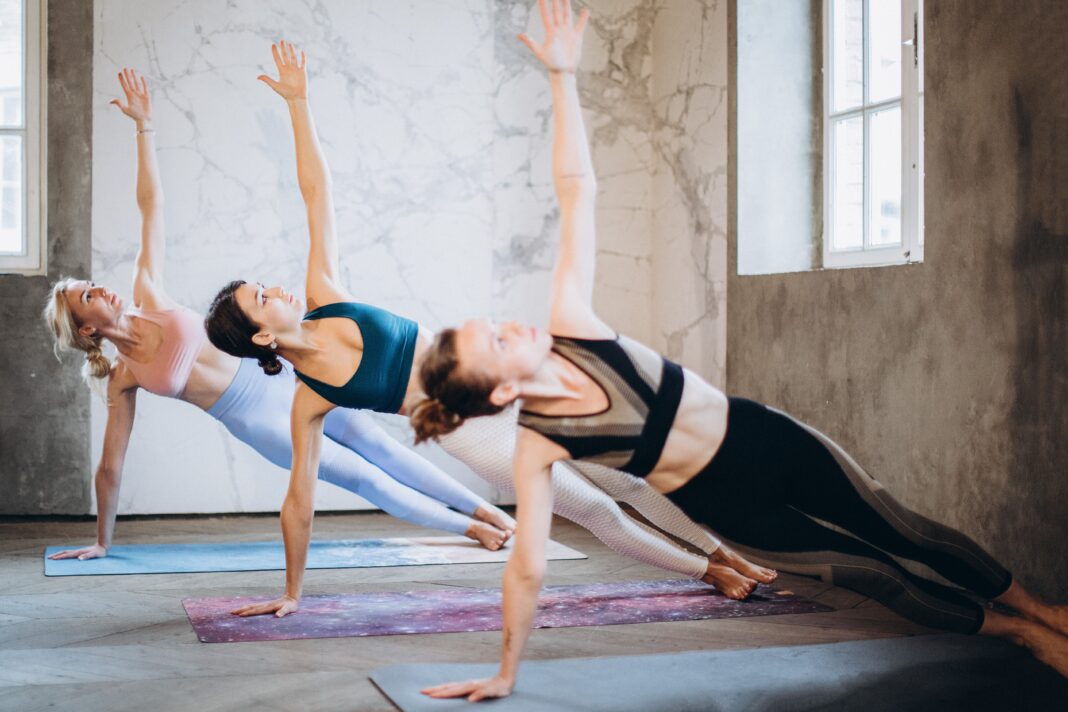Yoga is a holistic practice that combines physical postures, breath control, meditation, and ethical principles. It has been practiced for thousands of years and offers a wide range of physical, mental, and spiritual benefits. If you’re new to yoga, getting started can feel a bit overwhelming with the various poses and practices available. However, with the right guidance, you can embark on a rewarding journey of self-discovery and transformation. Here are 10 essential poses and practices for beginners that will help you lay a strong foundation for your yoga practice.
- Mountain Pose (Tadasana): Start your practice with Mountain Pose, which is the foundation of all standing poses. Stand tall with your feet hip-width apart, grounding your feet firmly into the mat. Engage your thigh muscles, lengthen your spine, and roll your shoulders back and down. Relax your arms by your sides, with palms facing forward. This pose promotes good posture, balance, and a sense of grounding.
- Child’s Pose (Balasana): Child’s Pose is a resting posture that helps to calm the mind and gently stretch the back. Kneel on the mat with your big toes touching and knees slightly wider than hip-width apart. Lower your hips towards your heels and fold your torso forward, resting your forehead on the mat. Extend your arms in front of you or place them alongside your body. Breathe deeply and allow your body to relax and surrender.
- Downward Facing Dog (Adho Mukha Svanasana): Downward Facing Dog is a rejuvenating pose that stretches the entire body. Start on your hands and knees, with your wrists under your shoulders and knees under your hips. Tuck your toes and lift your hips up and back, forming an inverted V shape with your body. Keep your arms straight, shoulders away from your ears, and heels pressing towards the ground. This pose strengthens the arms and legs while lengthening the spine.
- Warrior I (Virabhadrasana I): Warrior I is a powerful standing pose that builds strength and stability. Begin in a standing position, step one foot back, and turn it slightly outward. Bend your front knee, ensuring it aligns with your ankle, and ground the outer edge of your back foot. Raise your arms overhead, palms facing each other. Keep your torso facing forward and gaze forward or upward. This pose improves focus, balance, and core strength.
- Tree Pose (Vrksasana): Tree Pose is a balancing pose that cultivates stability and concentration. Stand tall with your feet hip-width apart and shift your weight onto one foot. Place the sole of your other foot on your inner thigh, calf, or ankle—avoid placing it on the knee joint. Bring your hands to your heart center or extend them overhead like branches. Focus your gaze on a fixed point in front of you. This pose enhances balance, concentration, and leg strength.
- Bridge Pose (Setu Bandhasana): Bridge Pose is a gentle backbend that helps to open the chest, hips, and shoulders. Lie on your back with knees bent and feet hip-width apart, palms facing down. Press your feet and arms into the mat, lift your hips off the ground, and interlace your fingers underneath you. Draw your shoulder blades together and lengthen your tailbone towards your knees. This pose improves spinal flexibility and strengthens the legs and glutes.
- Cat-Cow Pose (Marjaryasana-Bitilasana): Cat-Cow Pose is a gentle warm-up for the spine that increases flexibility and mobility. Begin on your hands and knees, with your wrists under your shoulders and knees under your hips. Inhale, arch your back, lift your chest, and look up (Cow Pose). Exhale, round your spine, tuck your chin to your chest, and engage your core (Cat Pose). Flow between these two poses, syncing your movement with your breath.
- Corpse Pose (Savasana): Corpse Pose is the final relaxation pose that allows your body and mind to integrate the benefits of your yoga practice. Lie flat on your back, arms resting alongside your body, palms facing up. Close your eyes and consciously release tension from each part of your body. Relax your breath and let go of any thoughts or distractions. Stay in this pose for several minutes, absorbing the calmness and stillness within.
- Pranayama (Breath Control): Pranayama is the practice of controlling the breath and vital energy. One simple technique is deep belly breathing, also known as diaphragmatic breathing. Sit or lie comfortably, place one hand on your abdomen, and the other on your chest. Inhale deeply through your nose, expanding your belly, and exhale slowly through your nose, contracting your belly. This practice calms the nervous system, reduces stress, and enhances mental clarity.
- Meditation: Meditation is a fundamental aspect of yoga that cultivates mindfulness and inner peace. Find a quiet space, sit comfortably, and close your eyes. Focus your attention on your breath, allowing your thoughts to come and go without judgment. You can also use a mantra or focus on a specific sensation or visualization. Start with a few minutes and gradually increase your meditation time. This practice promotes self-awareness, emotional well-being, and clarity of mind.
Remember, yoga is a journey, and progress comes with consistent practice and patience. Start with these essential poses and practices for beginners, listen to your body, and respect your limits. As you develop strength, flexibility, and awareness, you can explore more advanced poses and expand your yoga repertoire. Embrace the process, and enjoy the transformative benefits that yoga brings to your life.

























